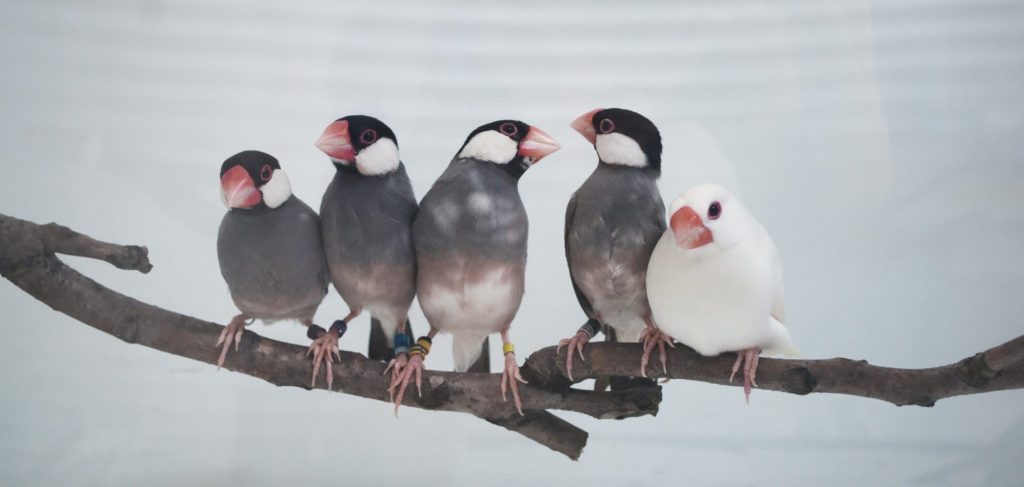Nice moves: First dancing, then mating in songbirds
Research Press Release | April 17, 2017
Java sparrows are more likely to mate after dancing together, according to a study from Hokkaido University, contradictory to the belief that songs are the primary sexual signal.

Songbirds are well-known to sing duets for various purposes such as mutual mate guarding and joint resource defense. For Java Sparrows, songs are performed only by males for courtship, but both males and females dance in a duet-like manner. The male’s song is thought to play an essential role in attracting female mates but the role of dancing has been unclear until now.
In a new study published in the journal PLoS ONE, Associate Professor Masayo Soma and Midori Iwama at Hokkaido University in Japan examined how duet-dancing influences the mating success of pairs during a first encounter.
The researchers found that although both duet-dancing and male-singing are associated to a higher rate of mating success, the former played an essential role in mating. Females often gave a copulation solicitation display (CSD), meaning they are ready to mate, before the males started to sing, or after listening to the introductory notes. These results suggest that dance is more important than the males’ singing.
Masayo Soma says “It is surprising that females select mating partners without hearing the main song. The main song varies greatly among individuals and is thought to be important for selecting a mate in similar species.”
They also found that duet-dancing could be initiated by either sex, confirming the existing knowledge that courtship is a bilateral process in this species. Duet-dancing might also be part of a “matchmaking” process since males and females performed it on their first meeting. Solo-dancing by either the male or female did not result in a higher mating success in their study.
“Our current research didn’t look at how well their dances fit together. Future studies should look into the duration and degree of coordination in duet-dancing to better understand the role of dancing and its relative importance to singing. We are also interested in how dance routines change among pairs over time,” Masayo Soma added.
Original article:
Soma M, Iwama M., Mating success follows duet dancing in the Java sparrow. PLoS ONE, March 8, 2017.
DOI: 10.1371/journal.pone.0172655
Funding information:
This work was supported by the Japan Society for the Promotion of Science Grants-in-Aid for Young Scientists (Nos. 23680027, 16H06177).
Contacts:
Associate Professor Masayo Soma
Department of Biological Sciences
School of Science
Hokkaido University
Email: masayo.soma[at]sci.hokudai.ac.jp
Naoki Namba (Media Officer)
Global Relations Office
Institute for International Collaboration
Hokkaido University
Tel: +81-11-706-8034
Email: pr[at]oia.hokudai.ac.jp
